THE RIGHT TOOLS FOR THE JOB
Produced by Michael Pattinson - February 2021

Tools
Below is a list of tools that are Essential, useful and optional
Fly Tying Tools | ||
|---|---|---|
| Essential | Useful | Optional |
| The Vice | Hair Stacker | Craft Knife |
| Bobbin Holder | Bobbin Threader | Tweezers |
| Scissors | Dubbing Needle | Flat Nose Pliers |
| Hackle Pliers | Bench Lamp | Magnifier |
| Half Hitch Tool | Dubbing Twirler | Dubbing Rake |
The Vice
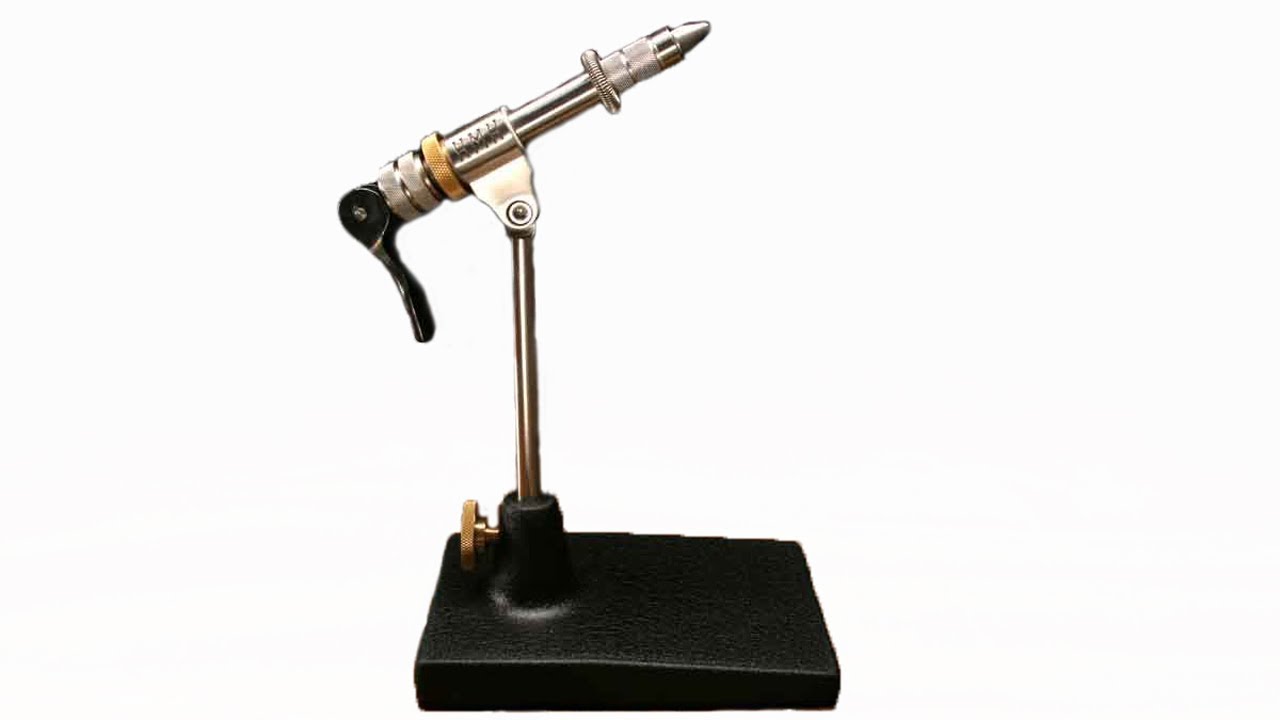
It is possible to tie flies without a vice but one needs real skill only acquired after years of practice. It is easier and quicker to use a vice
The choice of which vice to buy is entirely a personal one and has to be based on cost, frequency of use and the impression one gets when using a particular make. Spending a lot of money on an expensively engineered vice will not improve the quality of the flies you tie. On the other hand tying flies on a vice which fails to perform the basic function of firmly holding a hook whilst you apply materials will be frustrating. The best advice is probably to buy a lever arm vice for about £20 and use it till experience tells you that you would rather use something better or different - by which time you will have seen what you like and probably tried it as well
The Bobbin holder

Bobbin holders do what the name suggests. They start in price at about £2.50 and may cost as much as £50. Here again the quality of the flies tied will not be increased with an expensive bobbin holder but if you enjoy using quality tools buy the best you can afford
The ideal bobbin holder grips the spool firmly as thread is pulled from it; not so tight as the thread breaks and not so loose that the bobbin holder gradually drops under its own weight when left hanging. This tension can be altered by trial and error, by bending the spring arms of the bobbin holder or, in some more expensive varieties, it can be adjusted mechanically.
The tube through which the thread passes may be made of steel or ceramic tube or both. Ceramic tubes wear better but are more expensive. Changing spools to change thread colour is a pain. If you want to avoid this chore buy several bobbin holders or use a pale coloured thread and colour it using marker pens
Hackle Pliers
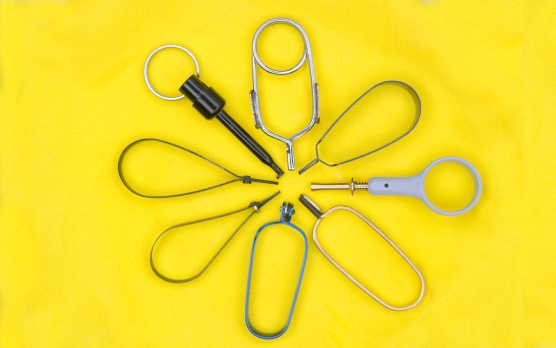
“You pay your money and you make a choice”. It is difficult to find a make which will work with all types of hackle
Hair Stacker
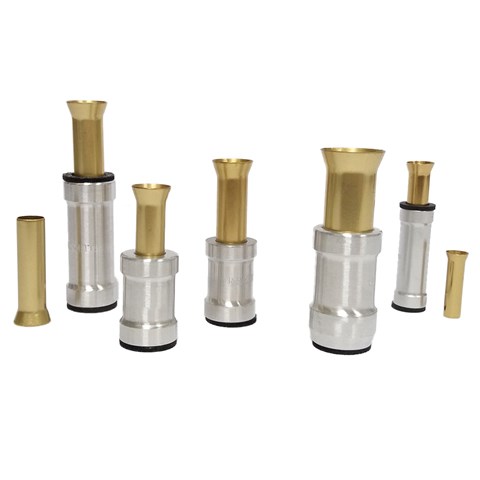
This is necessary if Deer Squirrel or Elk hair is used to make a wing. The hair is inserted tip down into the stacker and then gently tapped down preferably on a rubber surface. The guard hairs all line up and when they are removed in a bunch the hairs are all aligned. The very fine under fur has to be removed before the hair wing can be tied onto the shank of the hook. Small hair stackers are better than large ones
Scissors
Need to be chosen carefully. They must be fine enough to cut accurately at the tip of the blade. Keep a second pair to cut tinsel and wire and a third pair to cut longer materials
Half Hitch Tool
This is a simple tool and can be home made from the empty barrel of a very thin biro. As with all tools, quality makes a difference, and some bought ones are better than others. It is basically a tube with a small opening at one end. The thread is wrapped around the tube under tension two or three times and the opening of the tool is applied to the eye of the fly and the turns of thread slipped onto the hook just behind the eye
Bobbin Threader
Some fly tyers have perfected the art of sucking the end of the bobbin holder so pulling the thread through the tube ready to be used. The rest of us resort to a fine wire bobbin threader to assist the passage of thread through the bobbin tube when changing the bobbin. They are easy to make
Dubbing Needle or Bodkin
Can be home made using a sewing machine needle (the variety with a “ball” point end) or if preferred a sharper mounted needle
Bench Lamp
A wide variety of cheap LED lights are available and may be suitable for fly tying. One thing is certain - it is essential to get enough light on the hook
Dubbing Twirler
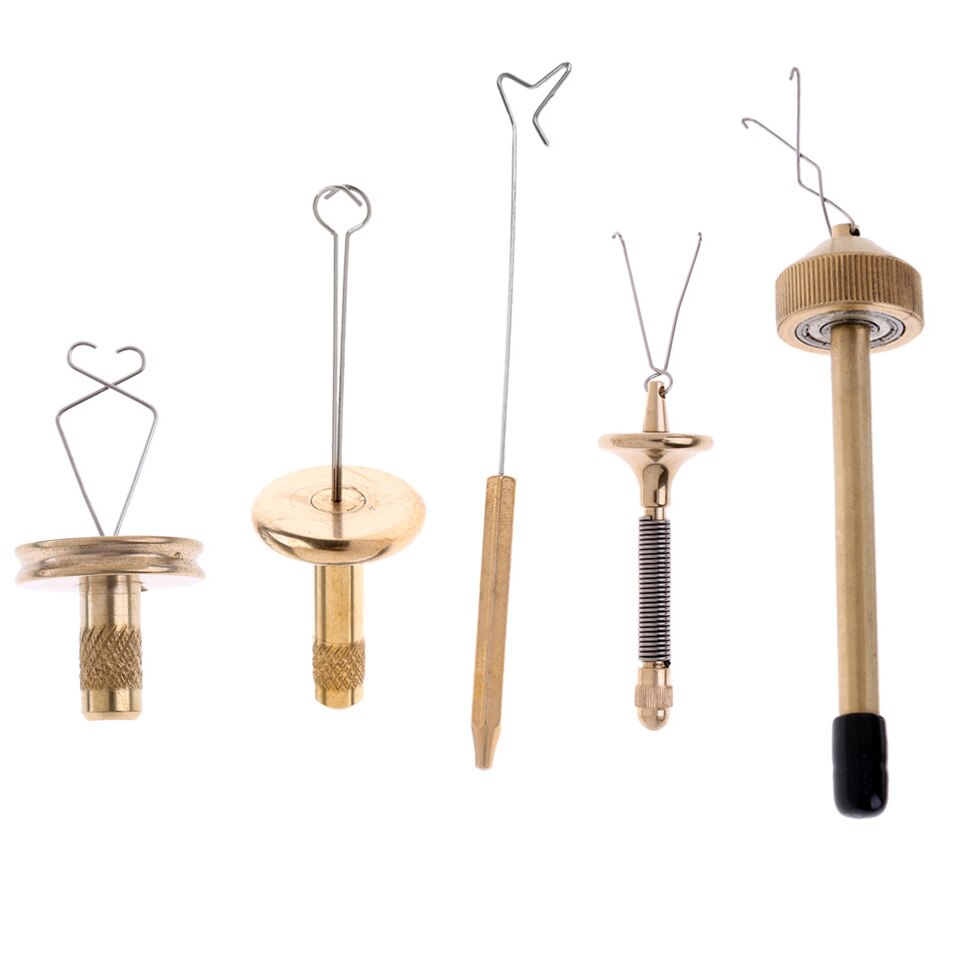
Dubbing is usually added to thread and then twisted between finger and thumb. An alternative method is to form a “dubbing loop” of thread at one end of the hook shank. Keeping the two lengths of threads apart a dubbing twirler is inserted into the loop followed by a very small amount of the dubbing. The twirler is then spun and the loop closes up trapping the dubbing in the twisted thread. This double thread is then wound round the hook shank to produce the desired dubbed body
Craft Knife
This is useful, together with a 6” metal ruler for making straight cuts in material such as sticky back lead sheet, foam sheets and flexibody materials
Tweezers
With fine points and flat points are useful in a variety of ways
Pliers
A small pair of flat nose pliers is essential for de-barbing hooks
Magnifier
The need for a magnifier is very much dependent on the eyesight of the fly tyer
Dubbing Rake
This is a device for scraping animal skins to tease out the fur to be used in the dubbing process. It is not essential as one can pluck the hair out by hand
And, finally the Whip Finish Tool
You'll either love it or hate it!
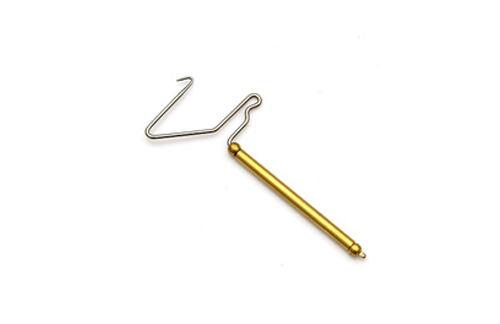
It is not in the list above because it is not absolutely essential. The half hitch tool can do the same job more or less but the whip finish tool, in some circumstances, can be a great help. You can also finish flies doing the three turn whip finish by hand without using a tool at all. More about the whip finish tool later